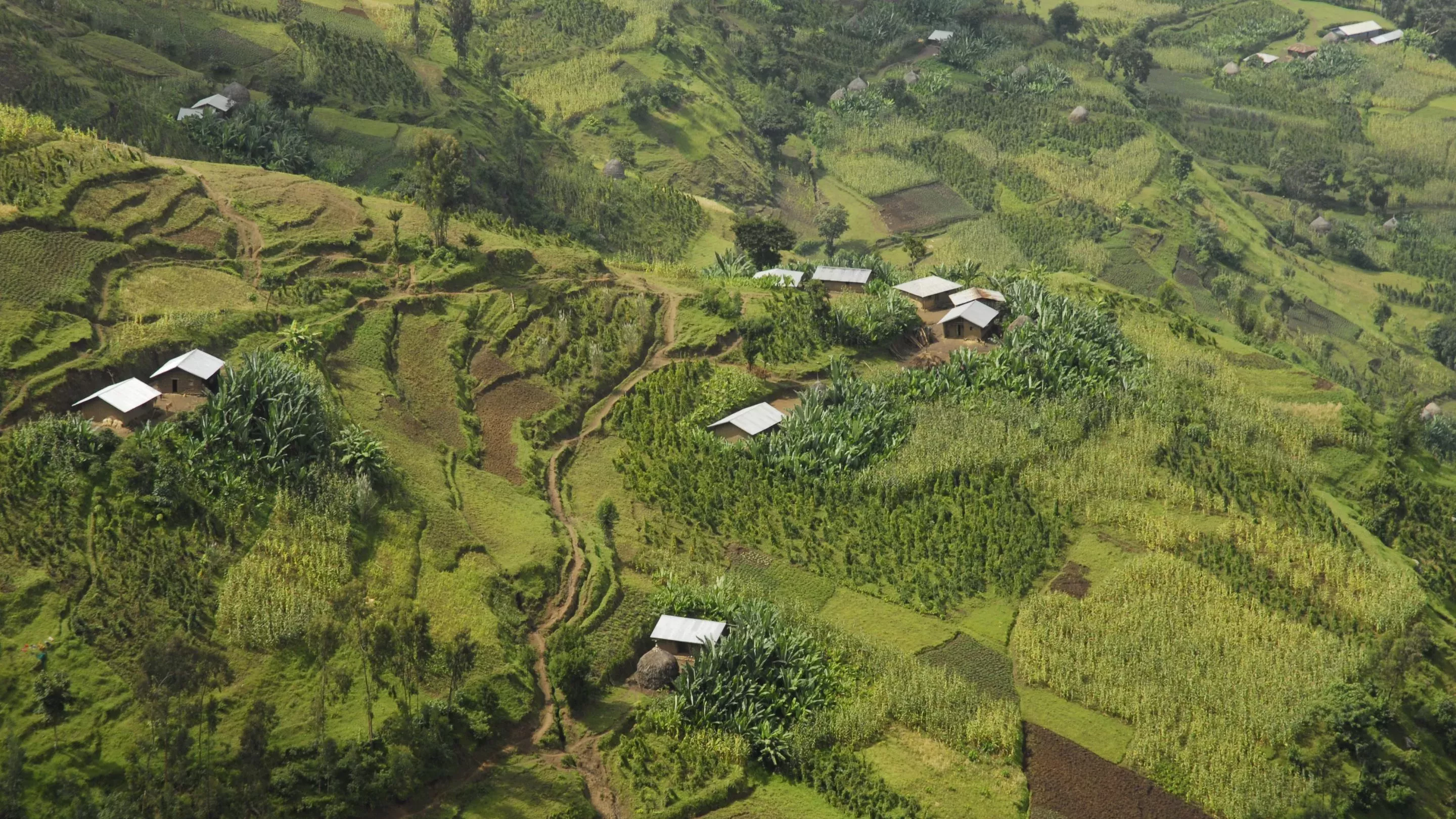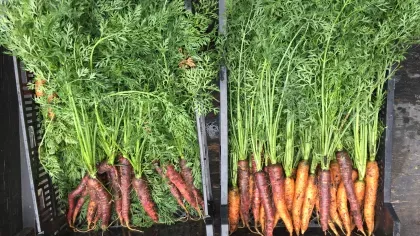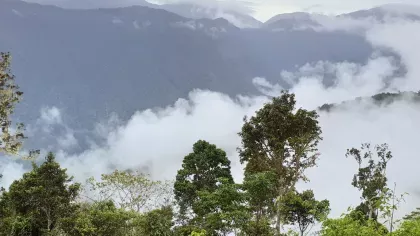8 March 2019
Ethiopia’s tree against hunger
Discover enset, a remarkable banana relative that provides the staple food for 20 million people in Ethiopia.

If you’ve never heard of enset, then you’re certainly not alone.
Whilst enset (Ensete ventricosum) grows wild in river valleys and gorges from Ethiopia all the way down to South Africa, it has only ever been domesticated in the Ethiopian Highlands.
Here it’s said that 60 plants could feed a family of five for a year.
The Ethiopian Highlands are a spectacular landscape.
Millions of small holder farms dot the hillsides, with towering stands of enset, up to ten meters tall waving in the wind.
Together with Ethiopian colleagues, I’ve spent the past year travelling across the Ethiopian Highlands helping to map the distribution and diversity of this remarkable crop.
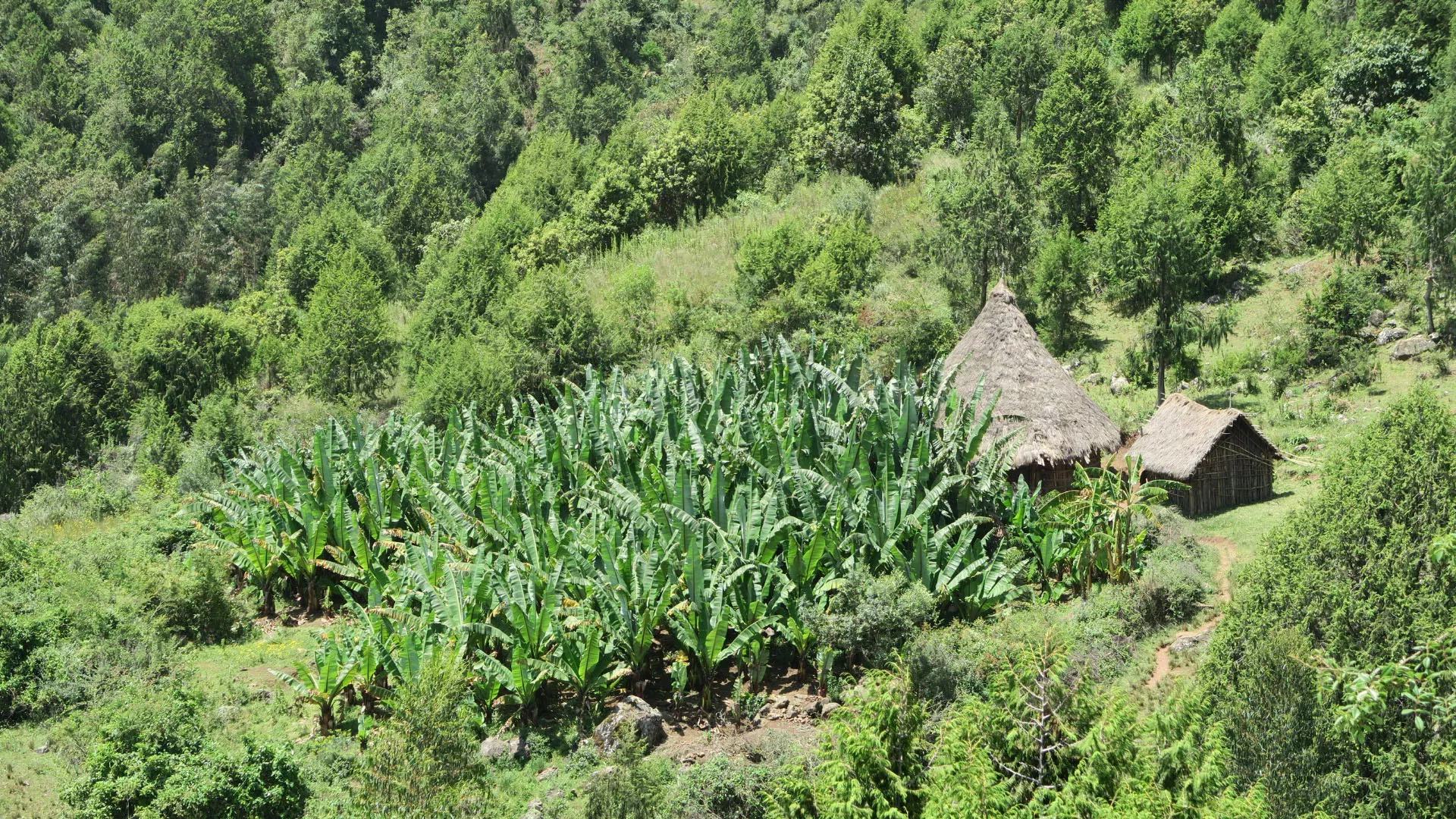
What is enset?
Enset is a close relative of the banana, in fact, it’s commonly known as the False Banana.
Whilst it grows as tall as a house, and a meter across, it’s actually a giant herb, rather than a tree.
Nevertheless, it looks like a banana with big paddle-shaped leaves and produces banana like fruits, though they are unfortunately full of huge black seeds so you wouldn’t want to try and eat one.
Instead it’s the pseudostem (trunk) and a large underground corm that are the edible parts.

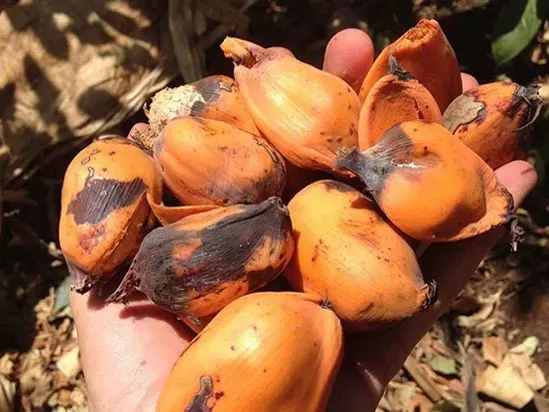
Enset’s role in food security
Enset has a number of unusual traits that make it such a useful food security crop, and have earned it the name ‘the tree against hunger’.
First, you can plant it or harvest it at any time of year.
Once planted, it keeps growing for up to ten or twelve years, where, eventually, it will flower and die.
As long as you harvest it before this point, you can collect several hundred kilograms of starchy vegetable-like tissue that you can turn into various foods.
It’s somewhat drought tolerant, and there are hundreds of different varieties (a bit like types of potato or apple) that we think are adapted to different conditions and have different flavours or uses.
Lastly, it’s clonally propagated – that means that to get new plants, you cut the top off an old plant in a special way and hundreds of new shoots will emerge which you can plant out into the fields.
Enset has other uses too; the fibres (a by-product from harvesting) are remarkably strong and used in construction.
The leaves are used for baking bread, roofing and packaging, and the midribs are great animal fodder in the dry season.
Several varieties – particularly those with the deep red leaves that you may see at Kew – are said to have medicinal properties.
The versatility of enset means that it can provide a long-term sustainable food supply, helping to buffer seasonal gaps in other crops, or events like crop pest or disease outbreaks.
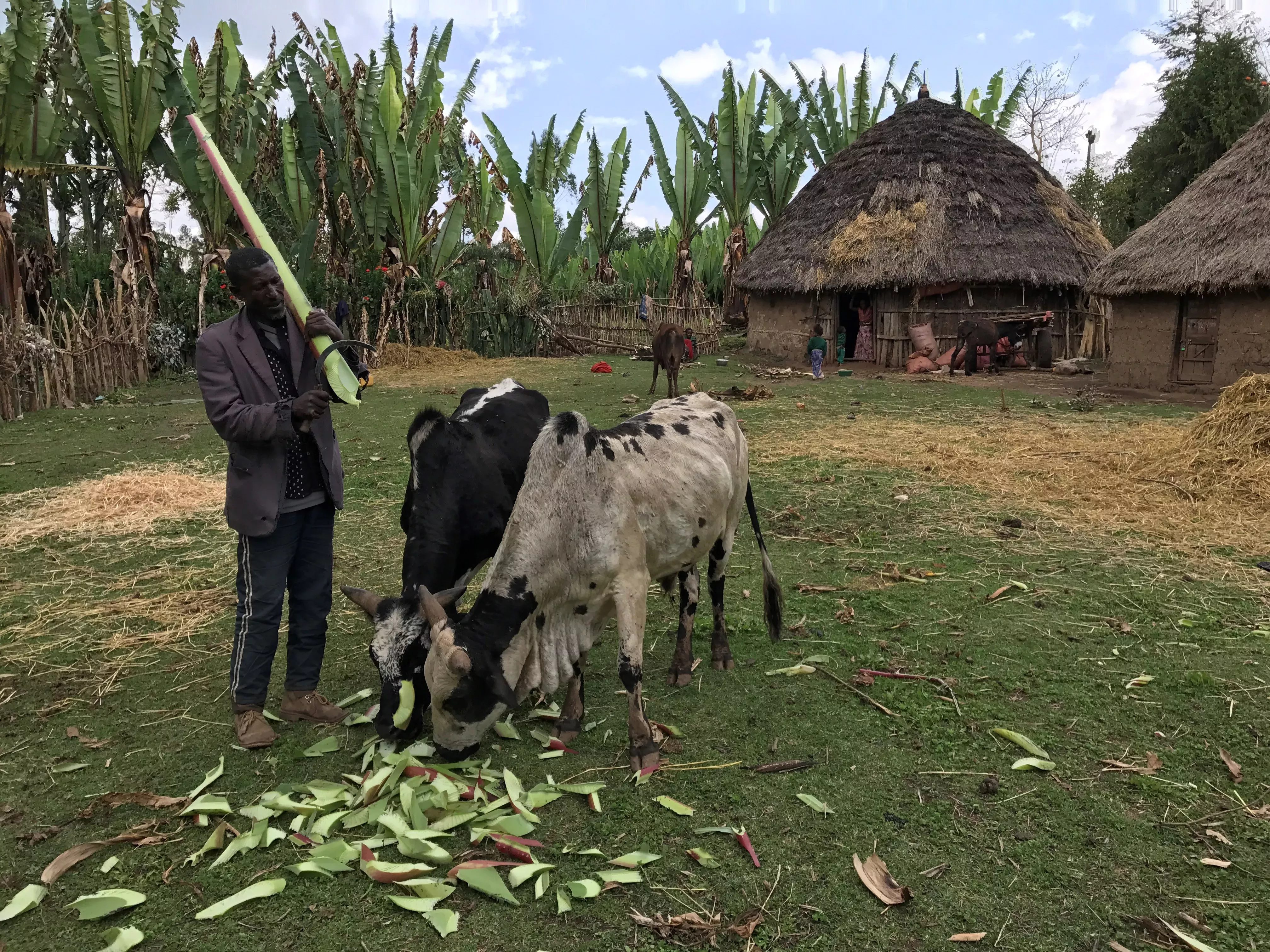
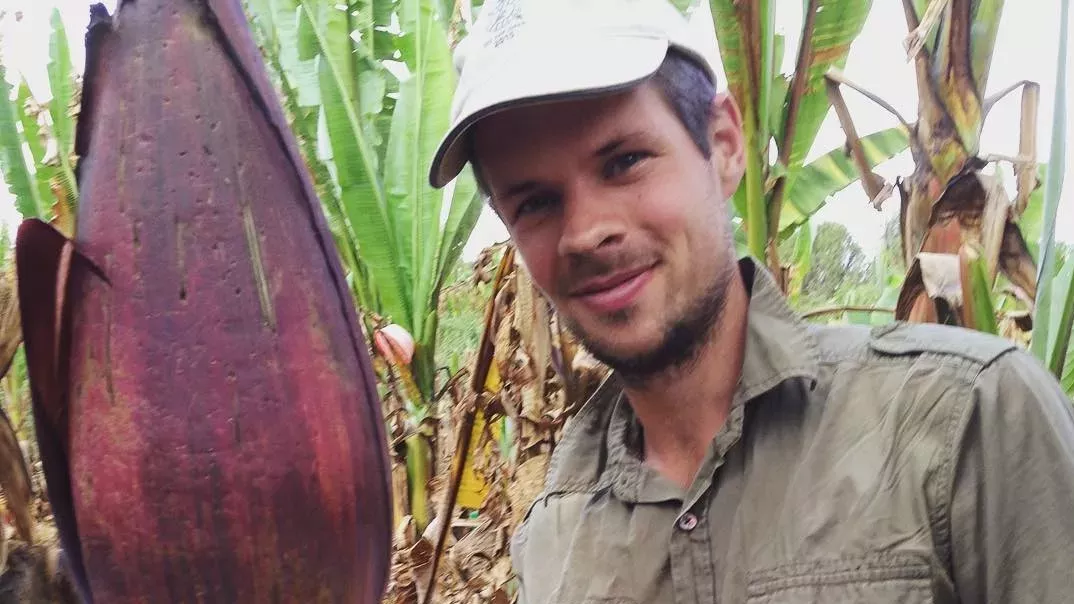
There’s lots still to discover
Despite enset’s importance, relatively little is known about its biology and ecology.
So far, we’ve recorded more than 1500 names for different varieties. Though with more than 50 languages spoken, the true number may be quite different.
We’ve begun to search for wild enset in Western Ethiopia and we’re DNA sequencing hundreds of varieties to map its cultivation.
We even have thousands of enset seeds growing at the Millennium Seed Bank as we try to unravel the conditions needed for germination.
This kind of research is essential if we ever hope to bank and conserve this remarkable Ethiopian crop.
About the team
This project was founded on a long running UK-Ethiopia partnership in biodiversity science research between Kew and Addis Ababa University. Through this project, our partnership has expanded to include the University of Leicester, Wolkite University, Hawassa University, the Ethiopian Biodiversity Institute and the Southern Agricultural Research Institute.
Together, this collaboration has accelerated research on enset in Ethiopia. We are very grateful that our work has been made possible by the GCRF Foundation Awards for Global Agricultural and Food Systems Research, via a project entitled, ‘Modelling and genomics resources to enhance exploitation of the sustainable and diverse Ethiopian starch crop enset and support livelihoods’ [Grant No. BB/P02307X/1].
References
Borrell, J. S., Biswas, M. K., Goodwin, M., et al. (2018). Enset in Ethiopia: a poorly characterised but resilient starch staple. Annals of Botany, XX: 1-20.
Brandt, S. A., Spring, A., Hiebsch, C., et al. (1997). The “Tree Against Hunger”: Enset-based Agricultural System in Ethiopia. Advancement Of Science, 56.
Harrison, J., Moore, K., Paszkiewicz, K., et al. (2014). A Draft Genome Sequence for Ensete ventricosum, the Drought-Tolerant “Tree Against Hunger.” Agronomy, 4: 13–33.
Tesfaye, B., & Lüdders, P. (2003). Diversity and distribution patterns of enset landraces in Sidama, Southern Ethiopia. Genetic Resources and Crop Evolution, 50: 359–371.

